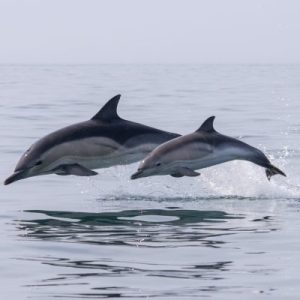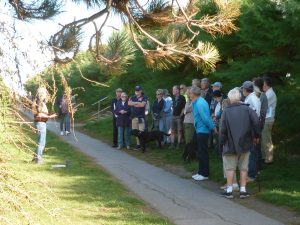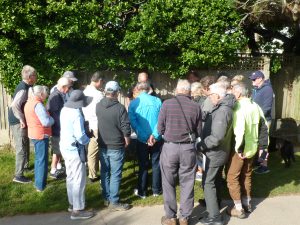Slugs by Michael Blencowe for Sussex Wildlife Trust
I’ve had a strange fascination with slugs since I was a little boy. Back then I believed that they were homeless snails that had lost their shells. It turns out I was right. Sort of. The whole eviction process had started as far back as the murky Mesozoic when some land snails cast off the shackles of a shell and evolved into slugs for some truly independent living. Sure, shells are great for protection and will help you to avoid drying out but they’re clunky and require calcium to construct. Without them you can roam anywhere and (to namecheck another mollusc) the world’s your oyster.
The slug’s shell has never been completely lost — a fragment remains hidden under their skin, a tiny, shrunken souvenir of their snail ancestry. Another link to their slimy dynasty is that all slugs, like all snails, are both male and female. As hermaphrodites, they possess both sets of sexual organs and this means that, if the situation dictates, they can go it alone and simply self-fertilise to produce their offspring. A true state of independence. Self-fertilisation creates a clone – or in a slug’s case hundreds of clones – but the problem with inbreeding is a lack of genetic variability. Clones all possess the same weaknesses. An entire slug population can be wiped out by the same parasites and pathogens. To produce varied and resilient offspring, most slugs go in for the more old-fashioned approach of finding a partner for a quick rustle in the undergrowth.
But one garden slug species has turned this chore into art – a flamboyant celebration of a lack of independence. The spotted and striped Leopard Slugs start their performance by chasing each other around a tree, giving each other sonic, sensuous strokes and cheeky nibbles. Then they climb, shimmy along a branch, and descend on a rope made of their own mucous. Here, hanging in mid-air, the slugs evert their sexual organs, entwining them to create a moonlit globe. This graceful, balletic trapeze performance must be one of the most mesmerising sights on our planet. If you search hard enough, you can find beauty in the strangest places. Still, if I was strolling through the woods at night, I’d hate to walk into it face-first.
Sussex Wildlife Trust is a conservation charity for everyone who cares about nature in Sussex. Founded in 1961, we have worked with local people for over half a century to make Sussex richer in wildlife. We rely on the support of our members.
Please consider joining us. Your membership will help us challenge decisions that threaten wildlife, care for more than 30 nature reserves, and inspire the next generation about the wonders of the natural world. It’s easy to join online at sussexwildlifetrust.org.uk/join



